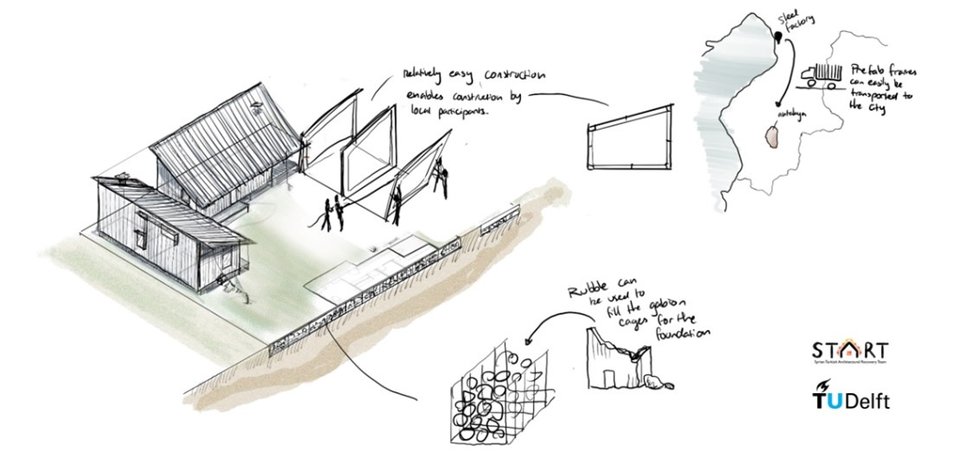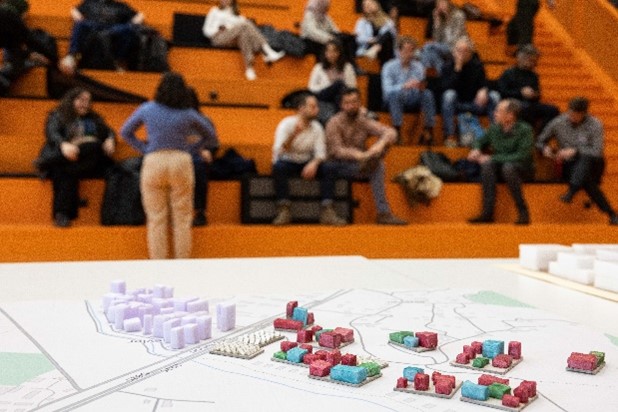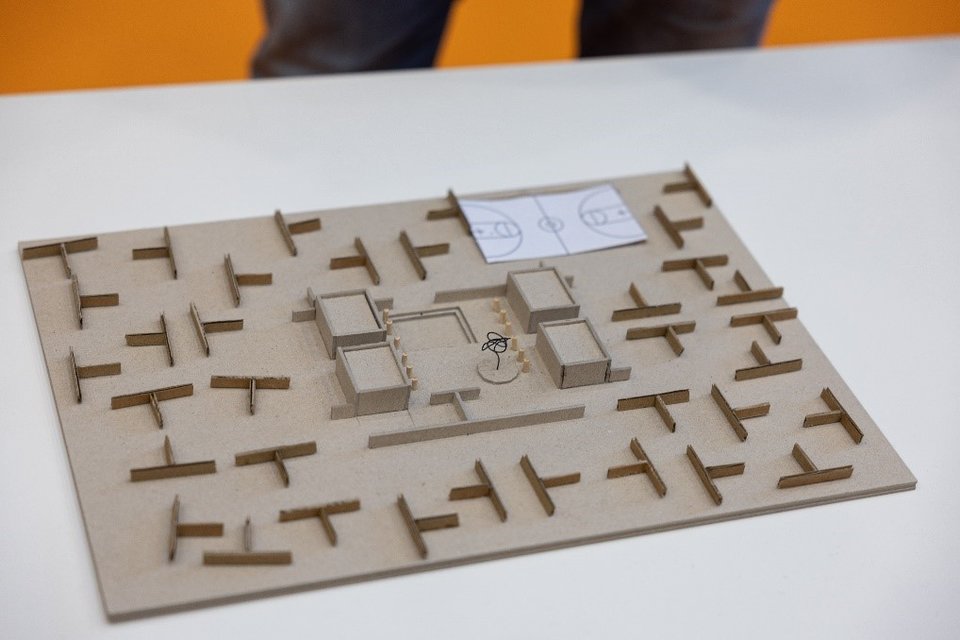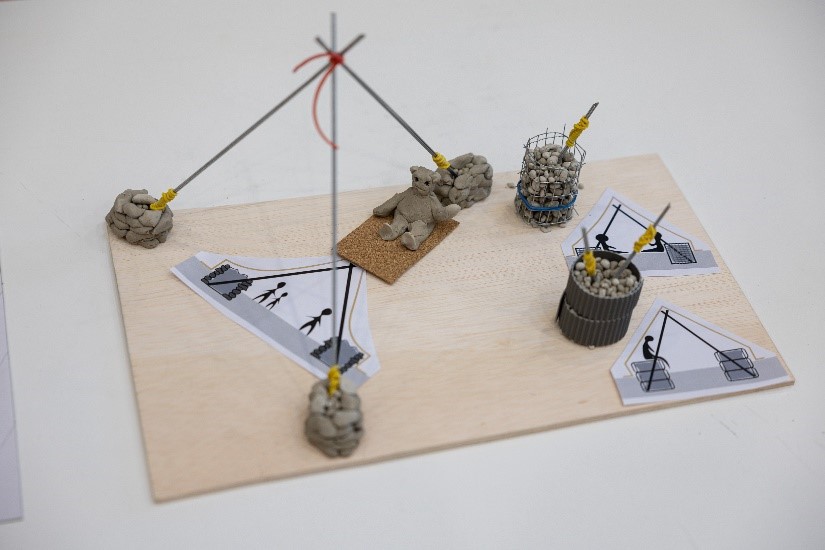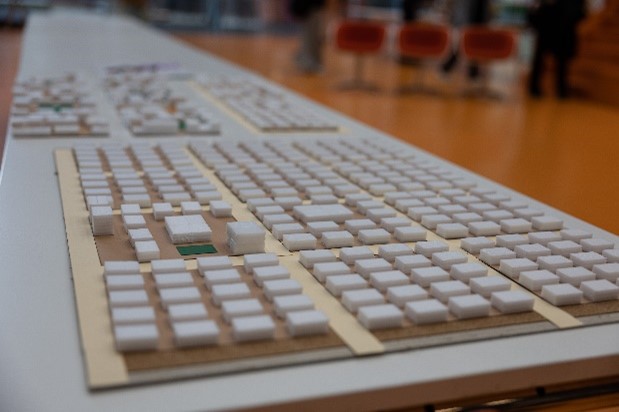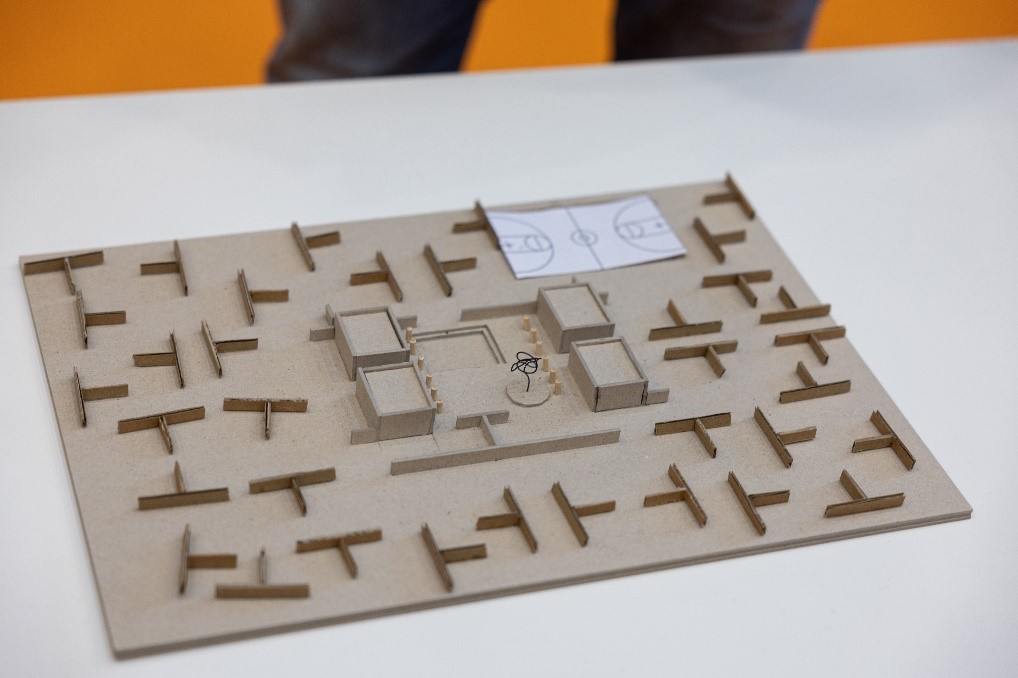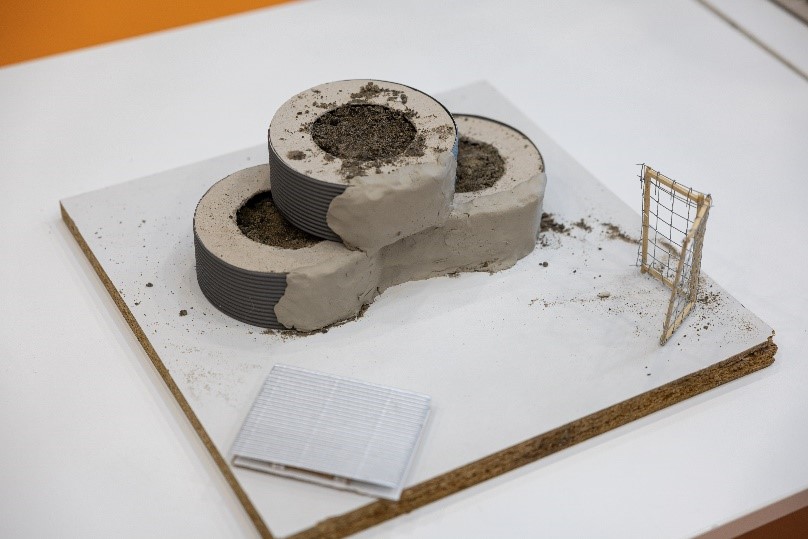Four designs for earthquake-resistant shelters for Turkey and Syria
Modular homes that can be quickly adapted to a family situation, cleverly reusing rubble as building material for temporary housing, setting up emergency shelters in tent camps in such a way that communities can still be together. With such housing solutions and designs came 50 students from TU Delft after an education week on earthquake-resistant building and architecture after humanitarian disasters. The best ideas will be further developed into a 1:1 prototype of an earthquake-resistant temporary shelter for subsequent deployment in Turkey and Syria.
After the earthquakes in Turkey and Syria, thousands of affected residents of Turkey and Syria are still bivouacked in the icy outdoors. Many have no home or no longer trust their homes. On the initiative of student Meriç Kessaf, who herself lost family members in the region, a team of students and lecturers at Faculty of Architecture decided to use their expertise to rebuild the region. In a 5-day workshop, 50 TU Delft students immersed themselves in earthquake-resistant construction and architecture in humanitarian disasters. In the end, they worked in groups to design quick medium-term housing solutions for the many homeless victims.
Eartquake-resistant, reuse, communal
The designs must, of course, be able to withstand new quakes or aftershocks, be built quickly by local people themselves with materials already on hand, and be easy to disassemble. The groups didn't just consider safe and quick shelter. Roads and bridges are impassable, making the supply of new building materials difficult. People have no income and there is hardly any running water or electricity. So in their design, the Delft students also looked at how jobs can be created, how communities can be involved in the construction of these temporary homes, how urban debris can be reused or put to other uses, and how to help people regain confidence in a structure now that many prefer to sleep cold but safe outdoors.
A life-size prototype
After the workshop week, the best aspects of all the designs will be further developed by the student team behind this initiative into a 1:1 prototype of an earthquake-resistant home that can be physically tested. This design will then be realized in locations in Turkey and Syria where it is now desperately needed. There is already contact with several organizations on the ground and many companies have offered their help in the realization.
If you are willing and able to contribute to further development from your knowledge or interest, please contact the team by email or via Linkedin.
Rebuilding Antakya
Tijs van der Eng, Lise Sarda, Farrah Jacobs, Takehito Yuki, Rens van Poppe
This group developed a house that can be easily modified depending on the wishes of the future residents and the number of residents. Thus, this design can be used for many houses. The group devised a structure using prefabricated steel structures. Steel is available locally (unlike wood). With the prefabricated steel frames, people can assemble it locally themselves.
The group also created a design for the arrangement of houses in relation to each other. Houses are put together in groups, with an open space between them, as is typically built in Antakya.
Shelter town
Bart Koppejan, Eveline Scheffel, Iman Mustafa, Dost Sahingoz, Vanessa Heider
Natural disasters can cause people to seek shelter for long periods of time, sometimes more than a decade. Shelters ("shelters") are usually intended as temporary solutions, while in reality they are often occupied for long periods of time. Can you look at temporary shelters in a different way and develop a self-sufficient city from there?
The first step in this approach is to build a community center that becomes a hub, a major hub that guides the transformation. This center collects data on available resources, including electricity, water and sanitation, and data on the people living in the shelter and how they can help. By involving the community from the beginning and viewing the transformation as a joint effort, confidence can be restored in the construction process.
If temporary shelters can become multi-story earthquake-resistant houses, the number of temporary shelters can gradually decrease. Construction of infrastructure such as electricity, water lines and sewerage can help complete the transition to a fully functioning city. By working with the local community and overseeing development, shelters can become permanent homes.
Facilitate - Give
Esra Ipek, Martin Lejewaan, Alkiviadis Oikonomidis, Akashat Kazana
This group devised a way to properly set up temporary shelters so that existing communities can reunite. Step 1 in this plan is to set up community centers (community centers) in various locations that facilitate professionals to connect with the survivors they want to help and on the other hand helps communities to live together again. Around such community centers, old communities can then temporarily settle in tents (step 2).
People who were used to living together thus have a place to meet again and pick up their lives. Families can live together. And by placing several community centers in different locations, there will be a clustering of neighborhoods instead of a huge field of tents with no identity.
To avoid chaos and give security and privacy, the group places walls in the form of T that demarcate the space.
Rebuilding the future with the past
Eda Akaltun, Shreye Sin, Deniz Erinc, Stijn Kuijsters
A major problem in affected cities is that there is a lot of concrete rubble and other waste. It is a huge task to dispose of it and there is no solution. Can you use debris from collapsed buildings and infrastructure as new construction material? This group devised ways to turn waste into building blocks and tested a number of solutions.
Short-term solutions the group developed are emergency tents made from reinforced steel and walls made from car tires, which can be filled and reinforced with waste. See photos below.
The 'START-TU Delft' (Syrian Turkish Architectural Recovery Team) initiative
The START - Syrian Turkye Architectural Recovery Team Initiative - was founded by a group of students to educate fellow students about post-disaster reconstruction and earthquake resilience, and to use collective knowledge and expertise to create a modular shelter.
"It is very difficult to do nothing while this catastrophe is unfolding, especially considering that we have all the knowledge at TU Delft. The purpose of our work and our motivation is that we teach our students enough knowledge about the affected area, earthquake-resistant structures, building culture and program requirements." This initiative now focuses on the disaster in Turkey and Syria but this knowledge should also resonate with students for future disasters around the world.
Check out START's website. If you want and can contribute to the initiative from your knowledge and interest, please contact the team by email or via Linkedin.
The students of this initiative are supervised by teacher Job Schroën of the master subject EXTREME. Read the education story created about the course Extreme and lecturer Job Schroen.
These activities are co-sponsored by TU Delft | Global Initiative, the platform and booster of Science and Technology for Global Development for Delft scientists and students. The initiative is widely supported by other teachers and employees of the faculty and university.

